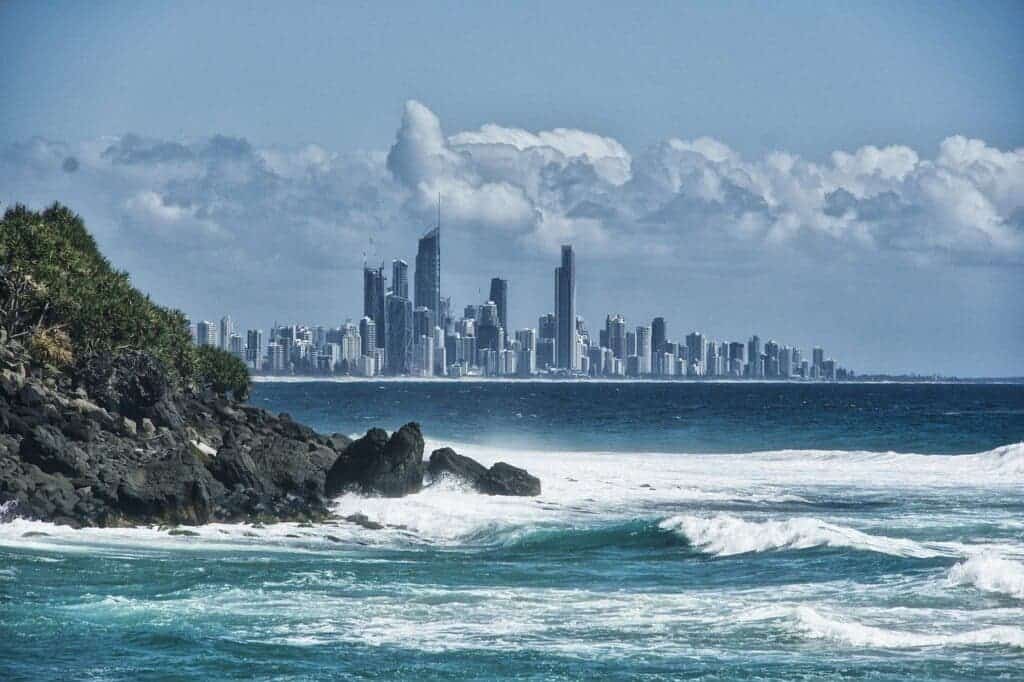An international team of researchers has found some troubling evidence: parts of many of the world’s coastal cities are sinking faster than global sea levels are rising.

Researchers from Nanyang Technological University, ETH Zürich, and NASA’s Jet Propulsion Laboratory report that coastal cities have more to worry about than just sea level increase. While climate change is melting the Earth’s glaciers and driving up the oceans, most coastal cities and towns are also sinking through a process called land subsidence.
This process of sinking land is caused by groundwater and gases leaving soils. The empty spaces they leave behind then get compacted by the massive weight of the buildings on the surface.
Going down
“By estimating how much and how fast these densely populated coastal cities are subsiding, our study helps constrain projections of coastal flooding in the coming decades as we expect more land to be flooded due to rising sea levels and land subsidence,” said lead author Cheryl Tay, a Ph.D. student at NTU’s Asian School of the Environment.
The findings are based on satellite radar measurements of land subsidence throughout 48 of the largest cities in the world. Although they found some variation in the subsidence rates across different regions, neighborhoods, and even blocks, the median sinking speed recorded in the study was 16.2 millimeters (mm) per year. The highest rates seen were around 43 mm a year. Both of these figures are significantly higher than the current rate of sea-level rise, which sits at around 3.7 mm per year.
This is particularly worrying for 44 coastal cities that are experiencing high rates of land sinking (those higher than 20 mm per year, the team explains). Such cities include Tianjin (China), Ho Chi Minh City (Vietnam), Chittagong (Bangladesh), Yangon (Myanmar), Jakarta (Indonesia), and Ahmedabad (India).
To better understand what these findings mean for the future, the team simulated the situation cities such as Rio de Janeiro will find themselves in by 2030. They report that an area of around 2 square kilometers of land inside the city’s limits will be completely submerged by that time due to the combined action of sea level rise and land subsidence if steps are not taken against climate change or to insulate the city from the ocean.
This data was used to put together land subsidence maps. All the satellite images collected over an area were put together — this step included hundreds of thousands of high-resolution images capturing some 24,000 square miles (62,160 sq kilometers) each. Images covering the same area at different dates were compared, giving the team a record of how surface altitude changed over time with a margin of error of within a few centimeters.
The 48 cities that were part of the study were selected for having populations of at least five million (in 2020) and being located at a maximum of 50 kilometers from the coast.
“This study highlights the value of high-resolution satellite observations for better understanding this issue – subsidence rates can vary quickly across small areas, meaning that land-based measurements often do not capture the true scale of the problem,” said UNM Department of Earth and Planetary Sciences Assistant Professor Eric Lindsey.
Data for the study was obtained from the Sentinel-1 satellites operated by the European Space Agency (ESA), which have been orbiting around the Earth ever since their launch in 2014 taking measurements of changes in the surface’s altitude.
“Our study highlights the fact that while this is a global issue, the response in many cases must be local,” said Lindsey. “Slowing the rate of groundwater extraction to a sustainable level should be a top priority for all municipalities in coastal areas.”
Despite the value of the findings, the team explains that the nature of the research means it would be quite difficult to recreate in other areas of the world. It involved the transfer and processing of massive amounts of data, which required extensive data storage capacity and powerful computers to process it even at a slow rate.
The paper “Sea-level rise from land subsidence in major coastal cities” has been published in the journal Nature Sustainability.






